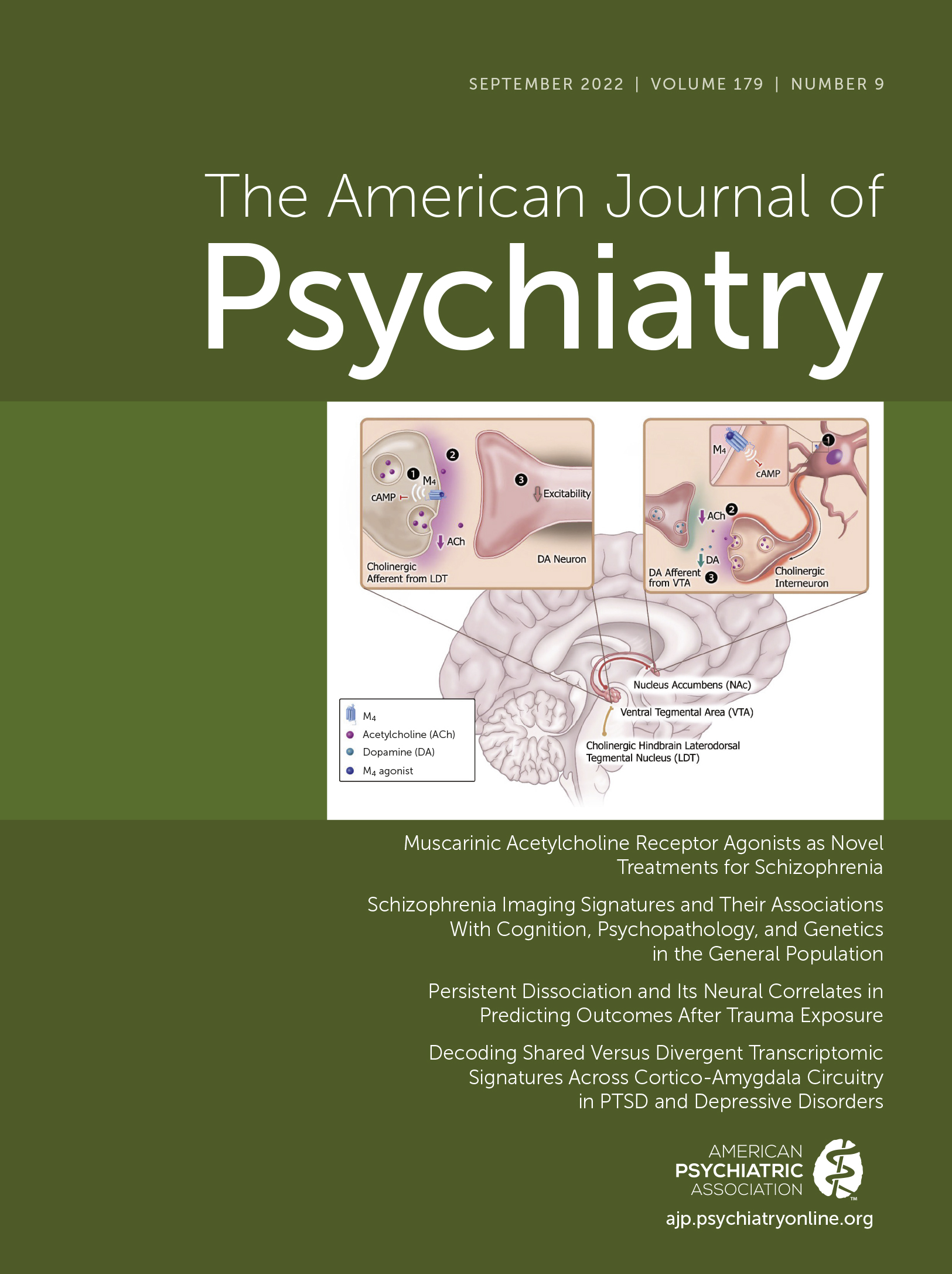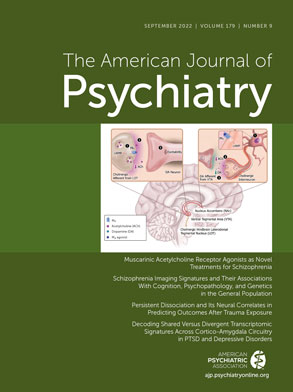Schizophrenia Imaging Signatures and Their Associations With Cognition, Psychopathology, and Genetics in the General Population
Abstract
Objective:
Methods:
Results:
Conclusions:
Methods
Study Sample
Image Acquisition and Preprocessing
Identifying the Presence of Schizophrenia Imaging Signatures and Defining Subgroups
Voxel-Wise Volumetric Analyses
Clinical and Cognitive Measures
Genetic Measures
Statistical Analysis
Results
Replication of Schizophrenia Neuroanatomical Subtypes
Prevalence of Schizophrenia Imaging Signatures in the PNC
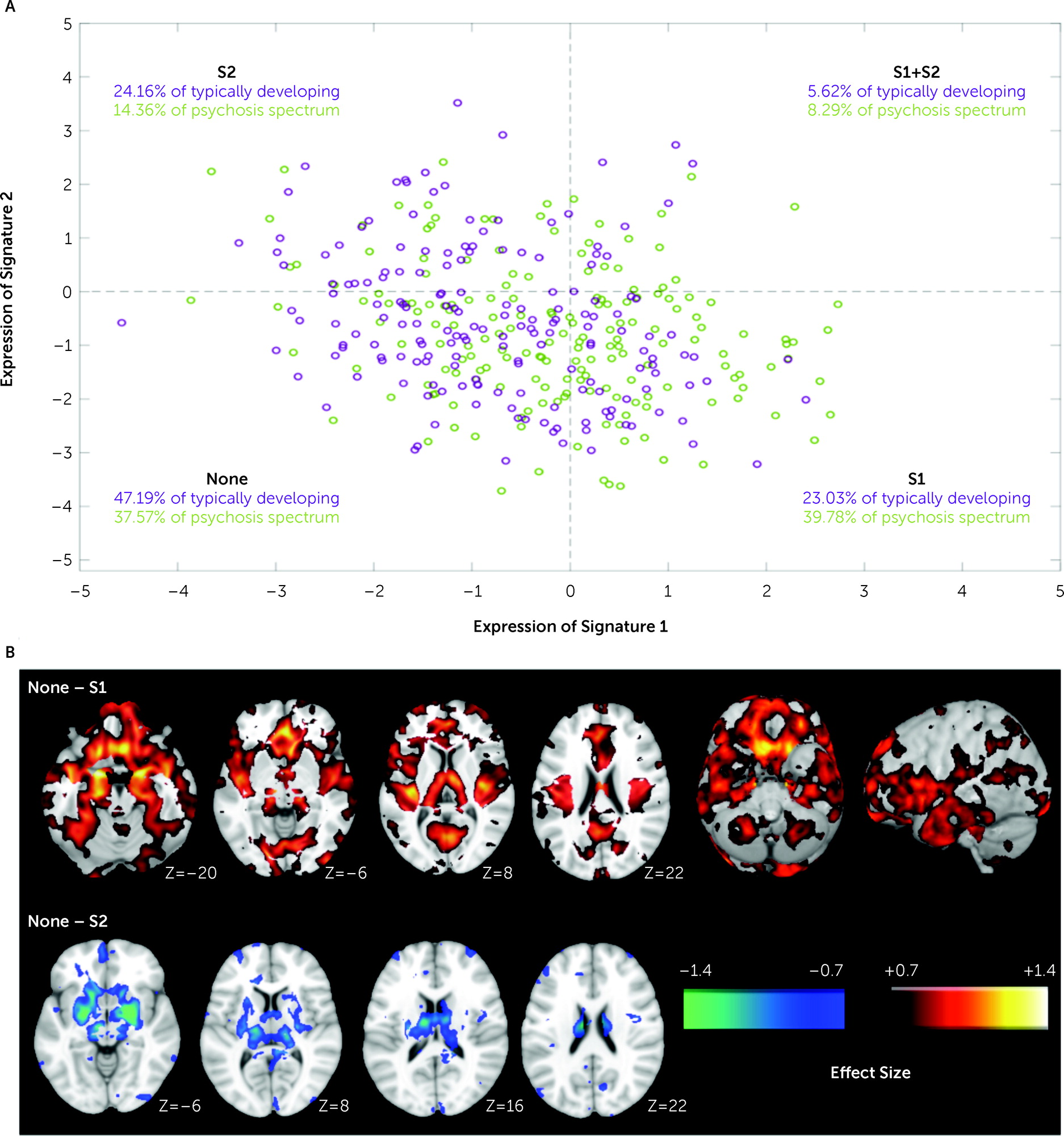
Associations Between Signature 1, Signature 2, Cognition, and Psychosis Spectrum Symptoms in the PNC
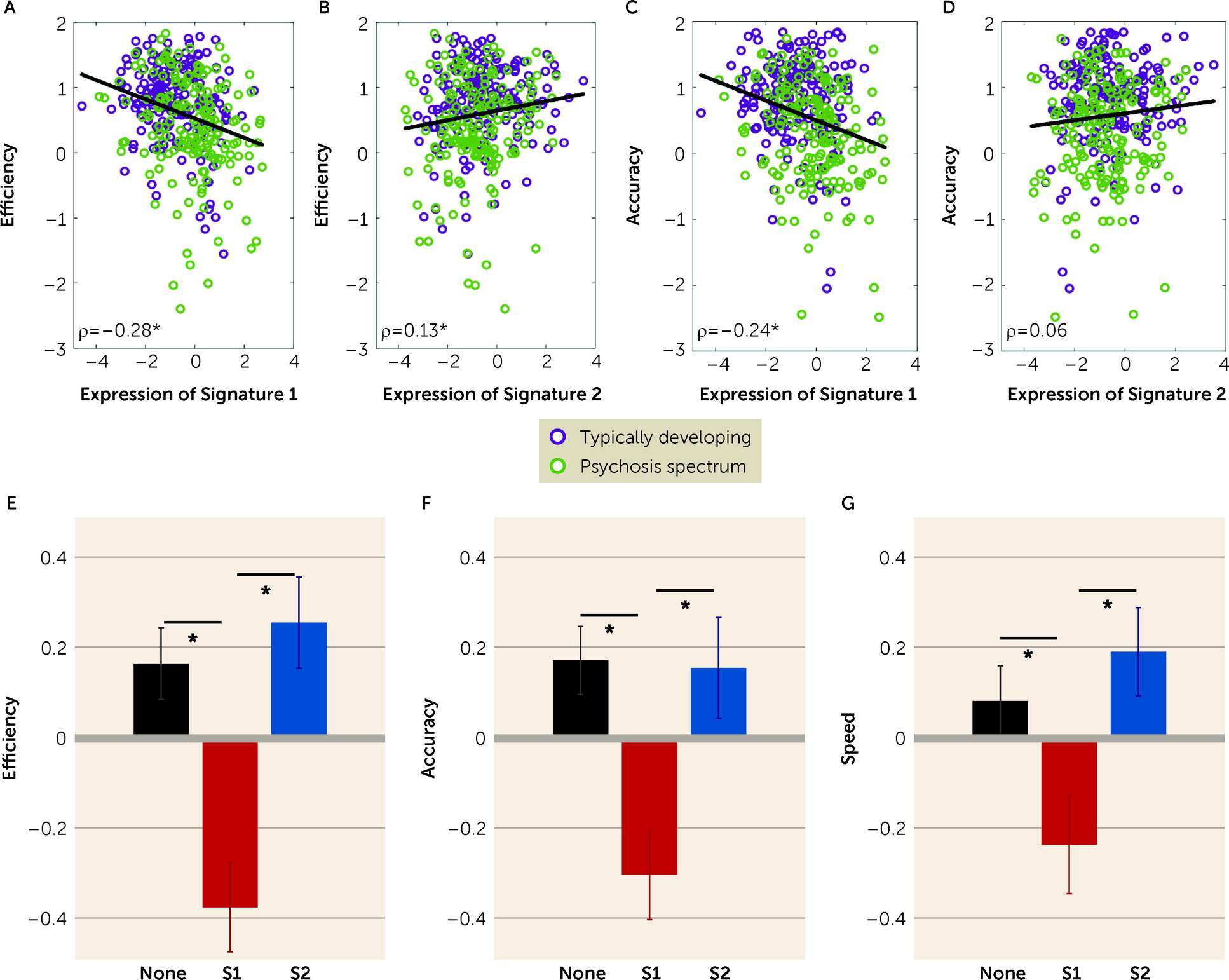
Prevalence of Schizophrenia Imaging Signatures in the UK Biobank
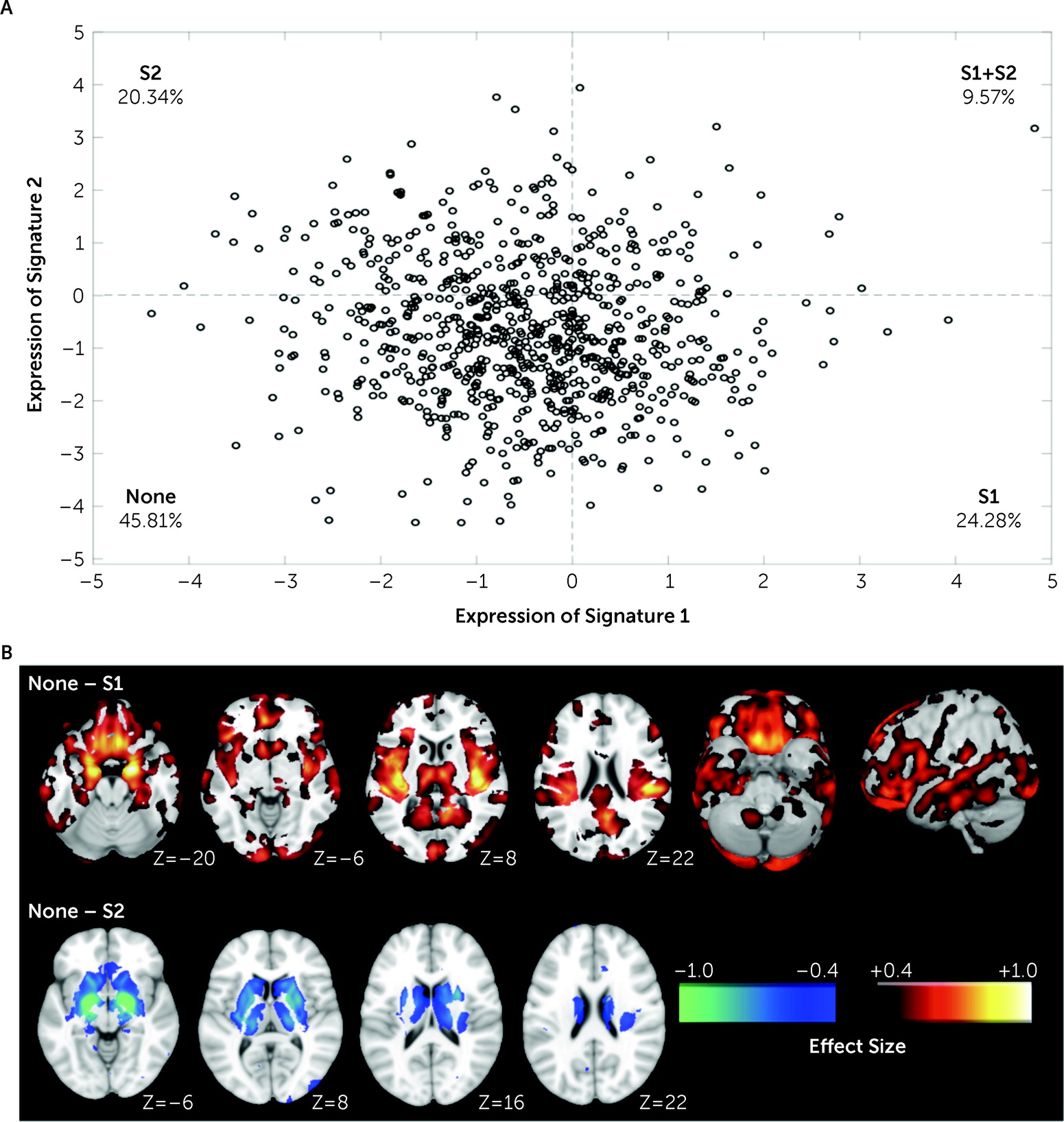
Associations Between Signature 1, Signature 2, and Cognition in the UK Biobank

Genetic Associations of Signature 1 and Signature 2 in the UK Biobank
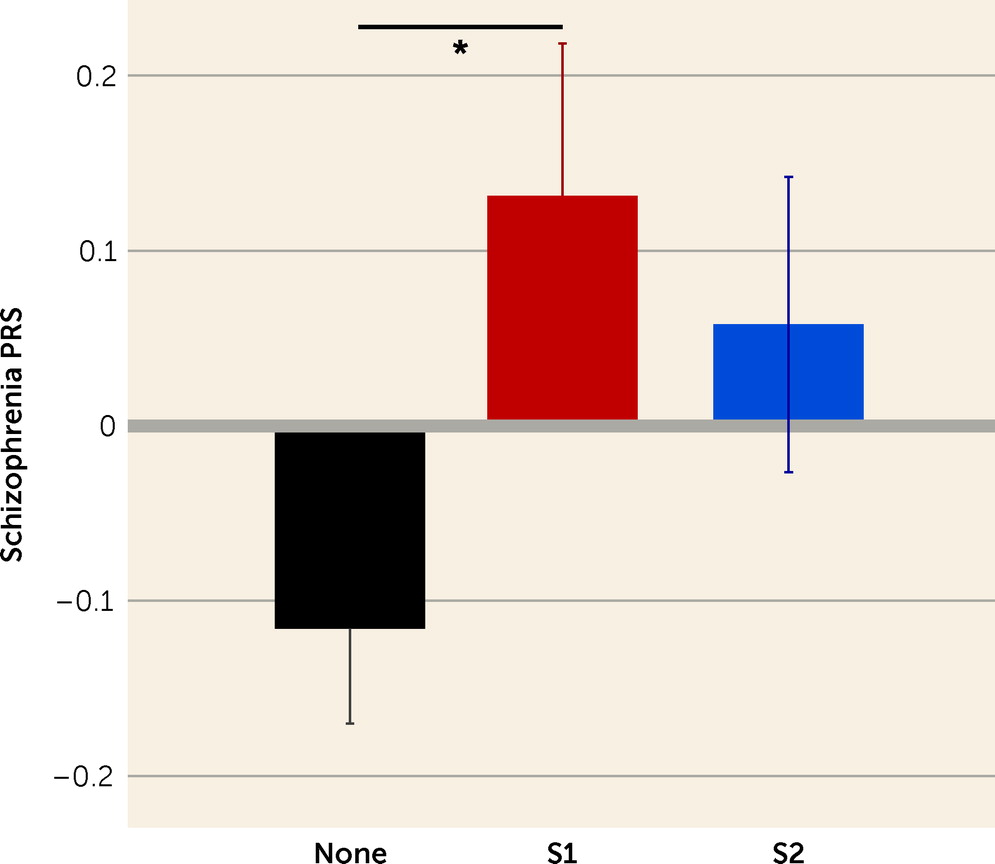
Discussion
Prevalence of Schizophrenia Neuroanatomical Signatures and Their Significance
Differences Between Signatures
Limitations
Conclusions
Footnotes
Supplementary Material
- View/Download
- 1.87 MB
References
Information & Authors
Information
Published In
History
Keywords
Authors
Competing Interests
Funding Information
Metrics & Citations
Metrics
Citations
Export Citations
If you have the appropriate software installed, you can download article citation data to the citation manager of your choice. Simply select your manager software from the list below and click Download.
For more information or tips please see 'Downloading to a citation manager' in the Help menu.
View Options
View options
PDF/EPUB
View PDF/EPUBLogin options
Already a subscriber? Access your subscription through your login credentials or your institution for full access to this article.
Personal login Institutional Login Open Athens loginNot a subscriber?
PsychiatryOnline subscription options offer access to the DSM-5-TR® library, books, journals, CME, and patient resources. This all-in-one virtual library provides psychiatrists and mental health professionals with key resources for diagnosis, treatment, research, and professional development.
Need more help? PsychiatryOnline Customer Service may be reached by emailing [email protected] or by calling 800-368-5777 (in the U.S.) or 703-907-7322 (outside the U.S.).
